2019
ANNUAL REVIEW
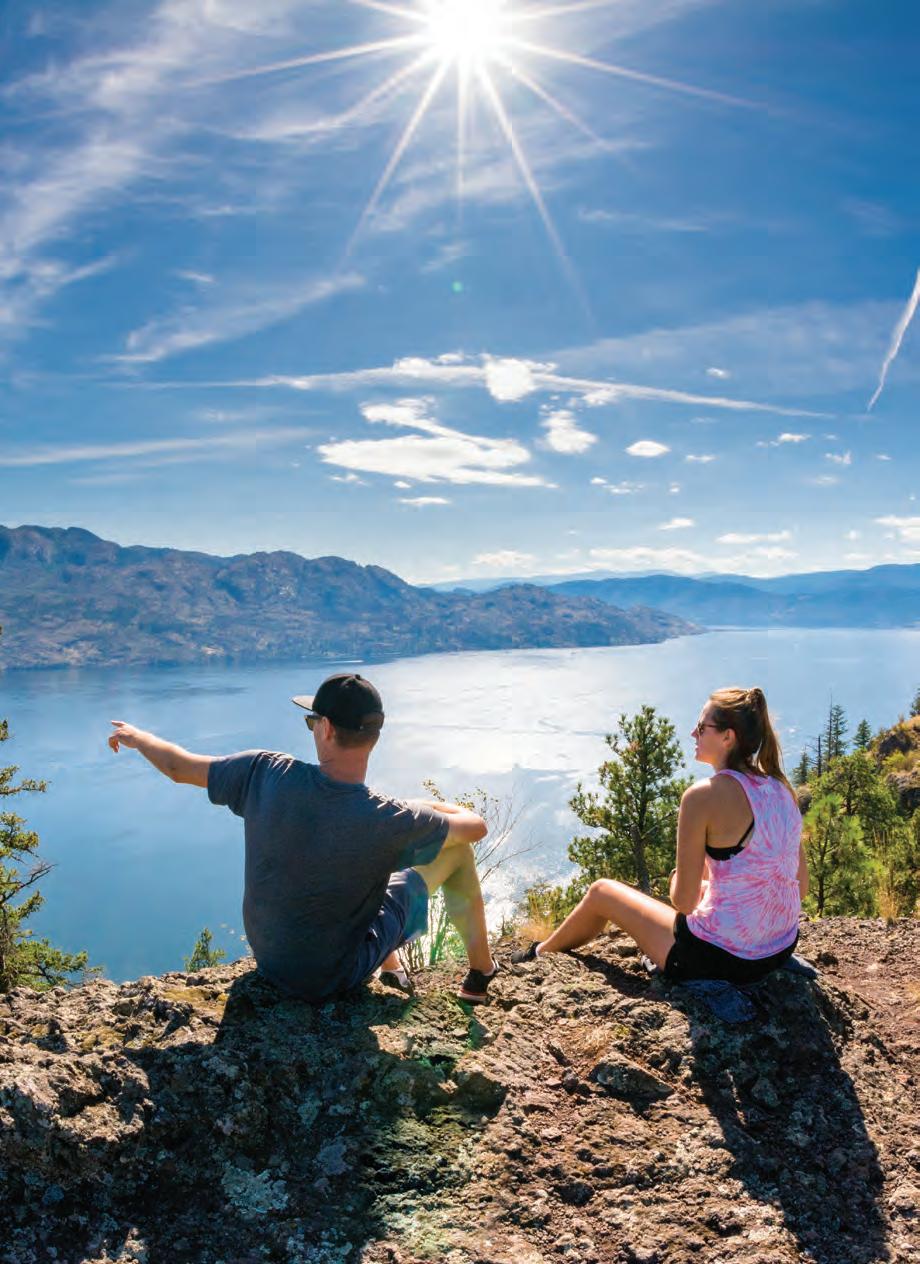
Mission Statement
The RDCO brings together member municipalities and Electoral Areas to plan for the future by identifying shared needs and opportunities and by delivering cost effective services.
2 RDCO 2019 ANNUAL REVIEW CONTACT US info@rdco.com rdco.com 250-763-4918 1450 KLO Rd, Kelowna, BC V1W 3Z4
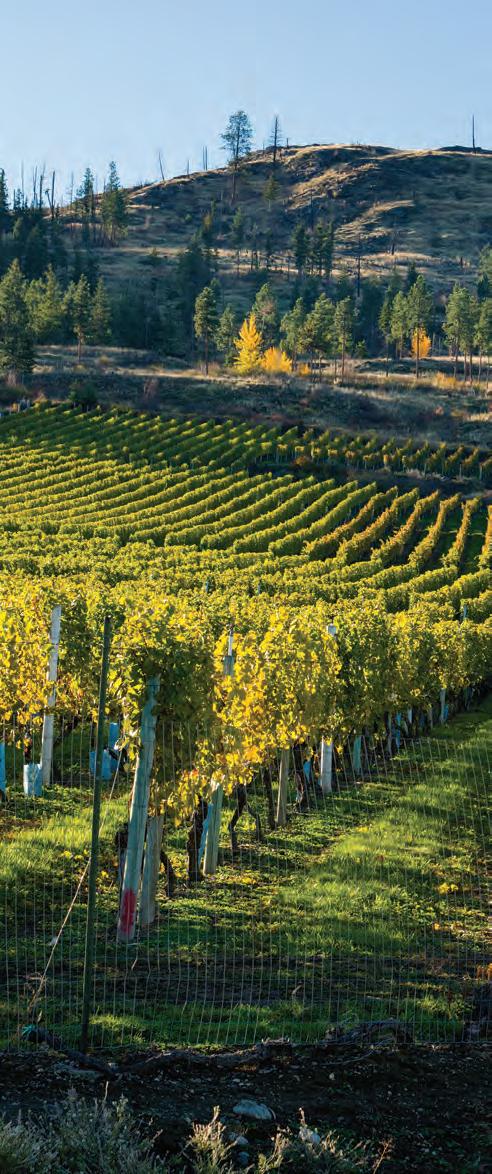
3 TABLE OF CONTENTS RDCO 2019 ANNUAL REVIEW Message From The Chair 4 RDCO Board 6 Strategic Priorities . . . . . . . . . . . . . 8 RDCO By The Numbers . . . . . . . . . 10 Message From The Administrator . . . . . . . . . . . . . . 12 About Us 14 What We Do 16 Economic Development . . . . . . . . . . 18 Transportation And Mobility 22 Environment 26 Sustainable Communities . . . . . . . . . 34 Support Services 40 • Corporate Services • Communications & Information Services • Community Services • Human Resources • Financial Services Central Okanagan Regional Hospital District 44 Where You’ll Find Us 46
Table of Contents
We wish to acknowledge that the Regional District of Central Okanagan is within the traditional territory of the syilx/ Okanagan people.
Message from the Chair
Gail Given, Regional Board Chair

This has been an extremely productive year for the RDCO and your Regional Board. Early in 2019 the Board developed and approved its new priorities. The Board and staff are working towards delivering the areas identified in the Strategic Priorities.
It lays the foundation to guide the Regional District organization through 2022 with a focus on four key building blocks: Economic Development, Environment, Sustainable Communities and Transportation and Mobility. These areas touch almost every resident through RDCO programs and services. You will see in the following pages how those priorities play a vital role in everything we do.
With Economic Development as one of the Board’s key themes, we were pleased to endorse the Moving Forward to 2025 Strategy for the Central Okanagan Economic Development Commission. This provides a roadmap for building on our region’s past economic success and strengths, while encouraging a strong, resilient economy for the future.
In an effort to generally hold the line on residential tax increases, our Board adopted a fiscally conservative 2019-2022 Financial Plan. And for the third year in a row, there was no increase to the average Central Okanagan homeowner with approval of the Central Okanagan Regional Hospital District budget.
After 11 months of extensive consultation and engagement, our region’s first Housing Needs Assessment Report was developed. The report will help address a key initiative of the Board in creating a healthy-built environment and high quality of life for people throughout the region. The assessment is a valuable planning tool and resource for local governments across the region.
As well during the year, the Board endorsed a five year action plan for monitoring and implementing initiatives within the Regional Growth Strategy, a long-range planning tool that’s actually mandated by the Local Government Act and helps Central Okanagan local governments plan for their communities while keeping regional goals in focus.
Another of the Strategic Priorities objectives is to increase access to parkland so residents have more opportunities to get outside and connect with nature. That’s exactly what we did as we celebrated the opening of the 52-hectare Goats Peak Regional Park in West Kelowna. So far, the number of visits indicates that people are genuinely excited about the new trails while protecting this important cultural and spiritual area of the syilx/Okanagan People. Goats Peak is another excellent example of our great collaboration, consultation and partnership with Westbank First Nation. That friendship extends to our Board table, where we welcomed Jordan Coble in his new role as WFN Councillor and the new Chief and Council representative to the Regional Board. Jordan’s worked with RDCO parks staff to help raise awareness of the Okanagan People and is excited about his new opportunity for making a difference.
On behalf of the Board, I thank former WFN Councillor Tom Konek for his passion, dedication and hard work in furthering our excellent relationship.
Several RDCO staff were recognized for outstanding service during 2019 including Parks Services Director Murray Kopp, presented with the President’s Award from the Canadian Parks and Recreation Association; Chief Administrative Officer Brian Reardon who received the President’s Award from the Local Government Management Association and Community Services Director Todd Cashin who was recognized by the Kelowna Chamber of Commerce as one of the region’s Top 40 Over 40.
In closing, I thank to all our outstanding staff at the RDCO who not only support our Board, but diligently work each day to make the Central Okanagan a better place in which to live, work and play.
4 RDCO 2019 ANNUAL REVIEW MESSAGE FROM THE CHAIR

5 MESSAGE FROM THE CHAIR RDCO 2019 ANNUAL REVIEW
RDCO Board 2019
Elected Term 2018-2022
The Regional District Board manages fiscal and policy issues arising as part of local governance. Appointed and elected members represent the three municipalities, two electoral areas of the Regional District and Westbank First Nation.
*Served to October 2019
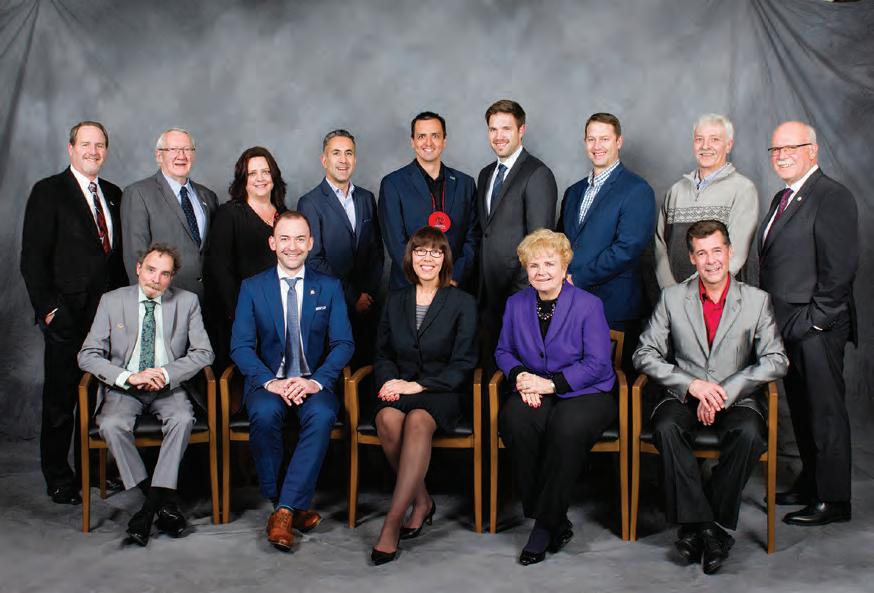
6 RDCO 2019 ANNUAL
RDCO
REVIEW
BOARD
Seated left to right: Charlie Hodge, Loyal Wooldridge, Gail Given (Chair), Maxine DeHart, Mark Bartyik Standing left to right: Luke Stack, James Baker, Cindy Fortin, Colin Basran, Tom Konek*, Stephen Johnston, Brad Sieban, Wayne Carson, Gord Milsom (Vice-Chair)
2020 RDCO Board Members

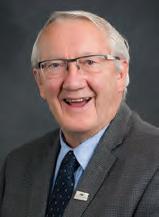
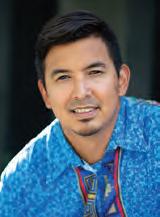







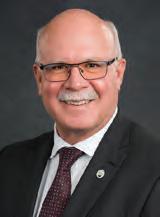
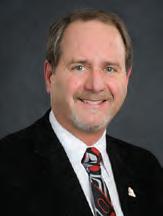
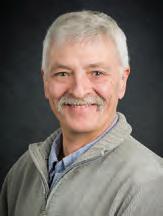
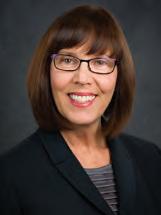
7 RDCO BOARD RDCO 2019 ANNUAL REVIEW
Gail Given Chair Councillor, City of Kelowna
Wayne Carson Director, Central Okanagan West Electoral Area
Luke Stack Councillor, City of Kelowna
Gord Milsom Vice-Chair Mayor, City of West Kelowna
Mark Bartyik Director, Central Okanagan East Electoral Area
Loyal Wooldridge Councillor, City of Kelowna
Colin Basran Mayor, City of Kelowna
Maxine DeHart Councillor, City of Kelowna
Stephen Johnston Councillor, City of West Kelowna
Cindy Fortin Mayor, District of Peachland
Charlie Hodge Councillor, City of Kelowna
Jordan Coble Councillor, Westbank First Nation (non-voting) Appointed Nov. 2019
James Baker Mayor, District of Lake Country
Brad Sieben Councillor, City of Kelowna
Strategic Priorities 2019-2022
Setting Our Direction
During 2019, the Regional Board adopted its Strategic Priorities that will guide the RDCO’s work priorities during the current term. We will focus on the areas of Transportation and Mobility, Sustainable Communities, Economic Development and Environment.
VISION
The RDCO is a vibrant and resilient region, characterized by interconnected urban centres, robust rural communities and a stunning natural environment.
Member municipalities and Electoral Areas work together in a spirit of respect and collaboration, to address shared needs and pursue joint opportunities. The syilx/Okanagan people are true partners, helping to interpret the past, shape the present and define a common future.
Citizens across the region are engaged in governance and invested in efforts taken to strengthen the broader community.
MISSION
The RDCO brings together member municipalities and Electoral Areas to plan for the future by identifying shared needs and opportunities, and by delivering cost effective services.
VALUES
Relationships
We build strong relationships with our member municipalities, the syilx/Okanagan people and partners.
Collaboration
We seek opportunities to partner with others in addressing shared needs and pursuing common interests.
Regional Perspective
We recognize the broader regional community and the importance of a regional perspective in planning and service delivery.
Transparency
We are open and transparent in our decision-making and actions.
Resiliency
We anticipate, prepare for and adapt to challenges and changing circumstances.
Good Governance
We develop practical and innovative solutions based on evidence and analysis.
8 RDCO 2019 ANNUAL
REVIEW STRATEGIC PRIORITIES
RDCO’s strategic priorities, developed by the Regional Board, speak to important goals, services and needs on which the Board wishes to focus the organization’s attention and resources. The priorities, summarized in the accompanying table, form the backbone of the document.
Transportation & Mobility
We will promote transportation and land use approaches that enhance movement throughout the region and reduce our collective reliance on vehicles.
Sustainable Communities
We will initiate and support efforts to create a healthy built environment in which all people throughout the region enjoy a high quality of life with access to safe neighbourhoods including a diverse range of housing options.
Economic Development
These priorities were developed by the Regional Board over two separate workshops in the months following the November 2018 inaugural meeting. Taken together, the priorities reflect the Board’s sense of future challenges and opportunities, and speak to a shared vision for the Central Okanagan as a vibrant and resilient region.
Each priority has an explanation, success measures and accompanying actions.
The Board’s vision, mission and values are also featured with an emphasis on collaboration among municipal members, the syilx/Okanagan people and other partners.

The Board will review the completion of priority work each year during the term. This provides an opportunity to highlight achievements and challenges, as well as measure annual progress.
We will support economic development through the efforts of the Central Okanagan Economic Development Commission, municipalities, silyx/Okanagan people and others aimed at building the regional economy.
Environment
We will initiate and support efforts to reduce our environmental footprint, adapt to climate change and connect with nature.
9 STRATEGIC PRIORITIES RDCO 2019 ANNUAL REVIEW
RDCO By the Numbers Facts and Stats
ENVIRONMENT SUSTAINABLE COMMUNITIES
849,000 VISITS
• 2,500 hectares of regional parks
• 68 kilometers of trails
2,145 VOLUNTEER HOURS LOGGED THIS YEAR IN REGIONAL PARKS
REGISTERED ALARM SYSTEMS
21,870
76 ARRESTS
• 350 Volunteers in Parks
RECREATION/ CULTURAL/ WATERFRONT TRAILS (GREENWAYS)
12% 5%
5% 8% CONSERVATION NATURAL AREA
ECONOMIC DEVELOPMENT
• 13,882 business licenses in region
• 231 in electoral areas
• 203 building permits worth $43.1 million in the electorial areas
• 2,116 False Alarms
• 1,341 Crime Stoppers tips
• $26,738 illegal drugs seized
• $8002 stolen property recovered
• 21,924 dogs licensed
• 78% dogs reunited with owners
44 DOGS ADOPTED RDCO WEBSITE SAW
77.4% NEW VISITORS
22.6% RETURNING VISITORS IN 2019
10 RDCO 2019 ANNUAL
REVIEW RDCO BY THE NUMBERS
RDCO By the Numbers
DISTRICT OF LAKE COUNTRY
CENTRAL OKANAGAN
WEST ELECTORAL AREA
OKIB DUCK LAKE RESERVE
OKANAGAN INDIAN BAND
CENTRAL OKANAGAN
EAST ELECTORAL AREA
CITY OF KELOWNA
CITY OF WEST KELOWNA
DISTRICT OF PEACHLAND
WESTBANK FIRST NATION
194,882
REGIONAL DISTRICT
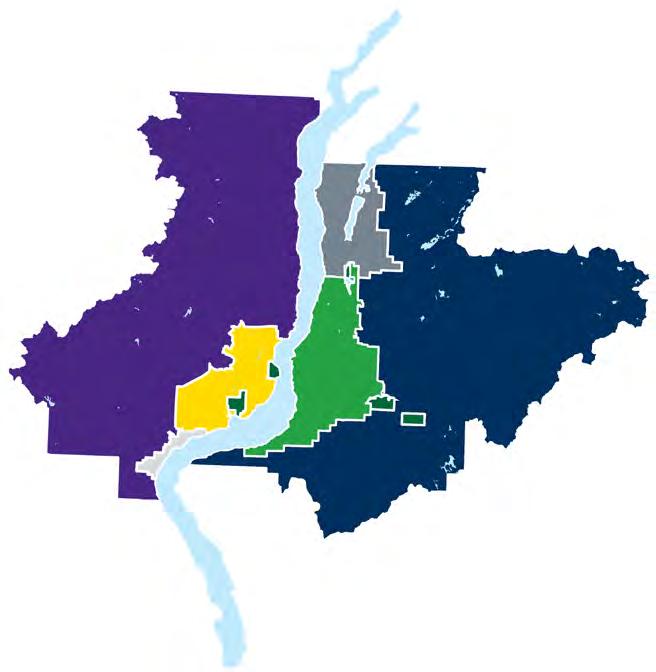
RESIDENCES Source: Census 2016
POPULATION (Estimate) Source: Census 2016 334 367 81,385 Households 88,374 Dwellings
522 134 53 22
127,380 City of Kelowna 32,655 City of West Kelowna 12,922 District of Lake Country
5,428 District of Peachland
ELECTORIAL AREAS POPULATION (Estimate)
11,009* Central Okanagan West 3,824 Central Okanagan East
11 RDCO BY THE NUMBERS RDCO 2019 ANNUAL REVIEW
Population
16
*Includes Westbank First Nation Reserve 9 and 10
45
LEGEND
Message from the Administrator
Brian Reardon, Chief Administrative Officer

The adoption of a new Emergency Management Program bylaw reflects the current region-wide responses to emergency situations and builds on the experienced learned through the past by our program, which is considered one of the best in BC.
As well, we have a new agreement with the City of Kelowna which through its fire department provides the regional Emergency Management Program.
During the year, we also completed major repairs to several RDCO parks that sustained significant damage during the record 2017 flooding. With funding through the provincial Disaster Assistance Program, we were able to install two new bridges and a trail surface for Hardy Falls Regional Park in Peachland. We also made repairs to the boat launches and docks at Okanagan Centre Safe Harbour Regional Park in Lake Country and at Fintry and Killiney Beach Community Parks in the Central Okanagan West Electoral Area. It’s great that these facilities are open and once again available for visitors use.
After extensive training and funding approval of the Regional Board, the Wilson’s Landing Fire Department launched its First Medical Response service for residents in the department service area. In a medical emergency, we all know that seconds count. This service, along with that provided by BC Ambulance paramedics, will help improve health outcomes for patients.
We also celebrated a very smooth transition to the new curbside garbage, recycling and yard waste company E360 Solutions, which operates an environmentallyfriendly Compressed Natural Gas fleet. The RDCO Waste Reduction Office worked with our member governments on several fronts, to raise awareness about the materials that can go inside curbside carts and the many other materials
that can be recycled at depots. The goal of this is to reduce contamination in curbside recycling and avoid fines for local governments.
For the first time since 2016, new rates were set for some water fees for the six water systems maintained and operated by the Regional District. The new rates allow customers to know what they can expect through 2022 and better reflect the actual operation costs and help to bolster asset reserves for future infrastructure needs.
During the summer and fall of 2019, we began the consultation process for the first updates to Development Cost Charges bylaws for the Westside Regional Wastewater Treatment Plant and East Trunk Sanitary Collection system. We hope to have new bylaws approved in early 2020, so that new development will help fund future infrastructure needs at the treatment plant which services residents and businesses in the City of West Kelowna, District of Peachland and Westbank First Nation reserves.
RDCO staff will continue working diligently in the year ahead to ensure all programs and services support the Strategic Priorities set by the Regional Board in the areas of Economic Development; Environment; Sustainable Communities and Transportation and Mobility. Our collective goal is to create an inclusive, prosperous region for everyone.
12 RDCO 2019 ANNUAL REVIEW MESSAGE FROM THE ADMINISTRATOR
One of the highlights of 2019 is that it was one of the first year’s in memory, that Central Okanagan residents were not displaced in large numbers by an emergency. However, that blessing doesn’t mean we weren’t preparing.

13 MESSAGE FROM THE ADMINISTRATOR RDCO 2019 ANNUAL REVIEW
About Us Our Organization
The Regional District of Central Okanagan has become one of the most desirable places to live in the Province. We are located in the heart of the scenic Okanagan Valley, just a five-hour drive from Vancouver and the Lower Mainland and about two hours north of the border with Washington State along Highway 97.
The region encompasses over 314,000 hectares of diverse topography straddling the shoreline of Okanagan Lake in the beautiful Okanagan Valley of British Columbia’s Southern Interior. Recreational opportunities abound from our mountain peaks, lakes and fantastic sandy beaches to our naturally forested areas. While our orchards and vineyards offer a rural, agricultural flavor we also have everything you’d expect in a thriving, urban centre.
Ranked as the third largest urban area in the Province, more than 195,000 people call the Central Okanagan home. The Regional District places a priority on maintaining the balance between growth and development, while protecting the natural environment and the unique Okanagan lifestyle.
Our home is a four-season playground that attracts over one million visitors each year. They come for extraordinary powder skiing, lush golf courses, world-renown wineries, fruit right off the tree and fresh, clean air and water. It’s no wonder people turn a visit into making this their chosen place to live, work and play.
Created in 1967, the Regional District is one of 27 in the Province. It is made up of two unincorporated electoral areas and the four member municipalities of Kelowna, West Kelowna, Peachland and Lake Country.
The Regional District of Central Okanagan includes the two unincorporated Electoral Areas of Central Okanagan East and Central Okanagan West, along with the member municipalities of the City of Kelowna, the District of Lake Country, the District of Peachland and City of West Kelowna.
The Regional District Board of Directors is made up of 13 elected and appointed representatives from the Electoral Areas and the member municipalities. In addition, a nonvoting member is appointed to represent the Westbank First Nation. Each month the Board holds a regular evening meeting and a daytime meeting of the Governance and Services Committee to provide guidance in managing the various programs, services and issues that arise as part of local governance.
We exercise financial stewardship by adopting a Five Year Financial Plan before the end of March each year. The Regional Board holds several budget meetings and encourages public participation and opportunities for comments on the Financial Plan, prior to adopting the fiscal bylaw.


The mission of the Regional District is to help protect the quality of life for all citizens by planning for the future, while delivering efficient and cost effective services to the region. Those services that are provided by the Regional District to Electoral Area residents include water, planning and solid waste collection. As well, the District provides region-wide services such as dog control and recycling, 9-1-1, Regional Parks and the Emergency Response Plan for the Central Okanagan.
MORE THAN 195,000 PEOPLE CALL THE CENTRAL OKANAGAN HOME
THE REGIONAL DISTRICT IS ONE OF 27 IN THE PROVINCE
14 RDCO 2019 ANNUAL REVIEW ABOUT US
OVER 1,000,000 VISITORS EACH YEAR BC
Regional District of Central Okanagan
Human Resources
Communications and Information Services
Economic Development
Commission
Environmental Services
Fire Services
Regional Waste Reduction Office
Department Directors & Officers
Chief Administrative Officer Brian Reardon
Financial Services Director/Deputy CAO Marilyn Rilkoff
Communications & Information Services Director Jodie Foster
Community Services Director Todd Cashin
Economic Development & Bylaw Services Director Corie Griffiths
Engineering Services Director David Komaike
Parks Services Director Murray Kopp
Engineering Services
Bylaw Services
Finance
Financial Services
Purchasing
Parks Services
Regional Emergency Program
Services
Services Planning
Services Crime Stoppers Crime Prevention False Alarm Reduction Program RCMP Victim Services 9-1-1 Communications
Services
Privacy
Community
Inspection
Police & Community Support
Corporate
Freedom of Information & Protection of
15 ABOUT US RDCO 2019 ANNUAL REVIEW
What
We Do Department Descriptions
As an organization, the Regional District provides services and programs Central Okanagan residents need.
COMMUNITY SERVICES
• The Community Services Department supports and enhances the quality of life enjoyed by residents through a variety of direct services such as Planning and Land Use, Building Inspections and Business Licensing as well as programs through Police and Community Support Services which include False Alarm Reduction, Police-based Victim Services, Crime Prevention, Crime Stoppers and 9-1-1.
CORPORATE SERVICES
• The Corporate Services Department provides services and support to the Regional Board, Policy and Bylaw development, Legal and legislative changes including Freedom of Information and Protection of Privacy requests, Records Management and Human Resources.
Every four years Corporate services oversees and manages Local Government Elections for Directors for the Central Okanagan East and Central Okanagan West electoral areas, as well as School District No. 23 Trustees for these areas.
COMMUNICATIONS AND INFORMATION SERVICES
• The Communications Department is responsible for all internal and external communications, advertising, news releases and other public engagement tools including social media channels in order to provide consistent and open information for Central Okanagan residents. Our Information Services team delivers online services like Geographical Information Systems, as well as providing the technical support staff that oversee the integration of corporate applications and work with all departments to improve the utilization of technology.
ECONOMIC DEVELOPMENT AND BYLAW SERVICES
• The Regional District of Central Okanagan Economic Development Commission (COEDC) provides economic development services to citizens and businesses of the region.
The COEDC utilizes the expertise of a 45+ member advisory body representing local government, partner organizations and industry leaders from a cross section of business sectors and provides a valuable link between the business community and the organization or industry sector they represent.
Bylaw Enforcement is also our responsibility which includes dog control and licensing as well as noxious weeds and zoning regulations.
16 RDCO 2019 ANNUAL REVIEW WHAT WE DO
What We Do Department Descriptions
ENGINEERING SERVICES
• The Engineering Services Department provides a variety of services directly to residents in several areas: Environmental Services including the Regional Waste Reduction Office, operation of the Westside Residential Waste Disposal and Recycling Centre and transfer stations at Traders Cove and North Westside, six RDCO water systems, Fire Services for the paid-on-call fire departments serving Ellison, Joe Rich, North Westside and Wilson’s Landing. We also manage Asset Management and Facilities and Fleet for the RDCO. We maintain and operate the Westside Regional Wastewater Treatment Plant servicing residents and businesses in the City of West Kelowna, District of Peachland and Westbank First Nation and provide the Nuisance Mosquito Control Program for participating funding areas.
FINANCIAL SERVICES
• Financial Services is responsible for providing financial and administrative services to the Regional District and Regional Hospital District. This includes working with the Board, public and all of the departments on: financial budgeting, tax requisitioning, reporting, cash management, purchasing/ contracting for goods and services, planning and monitoring to ensure our financial projections and Strategic Performance Based Budgeting targets are being met. Purchasing and procurement of goods and services by the Regional District is also a part of this service.
PARKS SERVICES
• Parks Services protects and manages over 2,100 hectares of parkland from Peachland to Lake Country. Our stewardship includes 30 Regional Parks as well as 20 community parks in the two electoral areas. In addition, Parks Services supports rural community recreation facilities including the Ellison Heritage School Community Centre, Joe Rich Community Hall and the Killiney Community Hall. Our Visitor Services staff provides activities, events and programs designed to celebrate, learn about and connect with nature.
REGIONAL EMERGENCY PROGRAM
• The Regional Emergency Program is identified by the Regional Board as one of the key areas of focus in its Strategic Priorities Community Sustainability theme. The program is coordinated by the City of Kelowna Fire Department on behalf of the Regional District, the cities of Kelowna and West Kelowna, districts of Lake Country and Peachland and Westbank First Nation. During an emergency, the program supports first responders and makes provisions to protect lives and critical infrastructure. The program also provides for recovery operations after any emergency or disaster, to return as quickly as possible to pre-emergency life.
17 WHAT WE DO RDCO 2019 ANNUAL REVIEW
Economic Development
We will support economic development through the efforts of the Central Okanagan Economic Development Commission, municipalities, syilx/Okanagan people and others aimed at building the regional economy.
The Central Okanagan Economic Development Commission (COEDC) works in partnership to facilitate and encourage development of a healthy and dynamic, sustainable economy by supporting existing businesses and encouraging appropriate new business investment across the region.
AGRICULTURE ASSET INVENTORY
In an effort to keep the public and business community informed on the economy of the region, the COEDC commissioned an Agriculture Asset Inventory and Agriculture Sector Report.
The Agriculture Asset Inventory provides a comprehensive list of resources available in the region to support the agriculture sector and includes detailed information such as: research infrastructure, funding supports, key individuals (research and expertise), available resources, and support organizations including accelerators/incubators.
The Agriculture Sector Report provides an enhanced understanding of current trends and pressures in the agriculture sector.
REGIONAL BUSINESS PROMOTION
The COEDC created and distributed content that promotes the Central Okanagan as a top destination for career opportunity, entrepreneurship and innovation.
Fifty businesses and entrepreneurs in agriculture/viticulture, animation/film/digital media, information communications technology, small business and manufacturing/aerospace of were profiled.
The profiles showcased innovation and interesting businesses that tell the story of the business, industry and career opportunities through interviews with leadership, featured job postings/career paths and on the ground business tours.
BUSINESS WALKS
The 7th annual Central Okanagan Business Walk was a success as representatives from Lake Country, Kelowna, Westbank First Nation, West Kelowna and Peachland joined the Commission and other partners throughout the region connecting in person with 226 local businesses.
Volunteers spoke with business owners and managers to gather information and identify program and service opportunities to help Central Okanagan businesses grow.
This year’s walk survey included questions about employee retention and recruitment, as well as general business opportunities and challenges. 78% of businesses in the region are growing, with the average state of business reported as 7.5/10.
MEMORANDUM OF UNDERSTANDING WITH TOURISM KELOWNA
Joining forces to create greater economic impact: that’s the goal of first-ever partnership between the COEDC and Tourism Kelowna.
The two organizations have signed a Memorandum of Understanding to jointly leverage the region’s key industry sectors to generate business investment and attract new meetings and conferences. The new partnership will initially focus on agriculture, viticulture, aerospace and digital technology industries, sectors recognized as major economic drivers for Kelowna and the Central Okanagan.
The partners will collaborate on regional promotion and sales campaigns to market and reinforce the Central Okanagan business advantage to businesses and business leaders.
18 RDCO 2019 ANNUAL REVIEW ECONOMIC
DEVELOPMENT

19 ECONOMIC DEVELOPMENT RDCO 2019 ANNUAL REVIEW
PLANNING FOR THE FUTURE
The Regional District of Central Okanagan’s Economic Development Commission works in partnership to facilitate and encourage the development of a healthy and dynamic sustainable community economy by supporting existing businesses and encouraging new business investment within the Regional District of Central Okanagan. Moving Forward to 2025 the Economic Development Strategy for 2020 – 2025 was completed in 2019. As the region, country and globe continue to grapple with economic challenges, the question is raised as to what the community can do at the regional level from an economic development perspective. The Moving Forward to 2025 strategy identifies priorities and recommended tactics for the COEDC to foster growth and sustainability in the economy up to 2025.
In order to retain, grow, and attract investment in the region Moving Forward to 2025 defines the region’s Strategic Pillars – Growing Sustainably, Competing Global, Attracting Top Talent, and Building Business – as well as identifying key Sectors in Focus and an Action Plan for implementation. The action categories defined in the Action Plan of the strategy will direct annual objectives while the Strategic Pillars and Sectors in Focus will guide rationale, tactics and metrics used in the program areas.
Moving Forward to 2025 is grounded in extensive community and business engagement, research, and analysis building on the success of past EDC programming, initiatives and activities. This detailed work is included in the Economic Base Analysis and the Strategic Development and Engagement Results Report.

Corie Griffiths, Director of Economic Development and Bylaw Services says “The strategy development process provided an occasion to reflect on successes, identify opportunities and innovative areas for growth that leverage the region’s core competencies, and, with extensive stakeholder consultation and business community input, set the course for the Economic Development Commission’s work over the coming 5 years. Moving Forward to 2025 is ambitious in vision and grounded in the diverse strengths of the Region’s economy – we have an exciting road ahead.”
The strategy provides a roadmap for building on past success, effectively leveraging the region’s strengths and encouraging a strong and sustainable regional economy for the future. The COEDC as the Region’s primary business resource is well positioned to implement the Moving Forward to 2025 strategy.
20 RDCO 2019 ANNUAL REVIEW ECONOMIC DEVELOPMENT
2020 ECONOMIC DEVELOPMENT INITIATIVES
GROWING SUSTAINABLY

• Support the Regional Growth Strategy priority projects plan and regional planning labs
• Increase awareness of Emergency Preparedness for Small Businesses
• Deliver economic climate awareness sessions and community engagement sessions
COMPETING GLOBALLY
• Partner with Tourism Kelowna and Accelerate Okanagan in the Regional Promotion Campaign 2020
• Facilitate Central Okanagan presence at Great BC Business Sale event
• Provide support and promotion to Metabridge
• Move ahead with the Cascadia Corridor Partnership: Identify collaboration opportunities with Government of BC and Vancouver Economic Development
INVITING TOP TALENT
• Facilitate, develop and deliver the Okanagan Young Professional Collective program
• Engage connectees through the Connector program
• Partner with Central Okanagan Public Schools for the Innovation Generation Challenge program
• Facilitate connections between post-secondary students and industry
BUILDING BUSINESS
• Create and connect businesses to resources, tools, support programming and market information through site visits and employer outreach
• Partner with Accelerate Okanagan on OKGN Angel Summit
• Conduct site visits to farm operators and facilitate agriculture events through Agriculture and Agri-Tourism program
• Facilitate regional Small Business Walk program
• Provide expertise and support to business through the Export and Business Development program
21 ECONOMIC DEVELOPMENT RDCO 2019 ANNUAL REVIEW
Transportation and Mobility
We will promote transportation and land use approaches that enhance movement throughout the region and reduce our collective reliance on vehicles
Regional planning is critical in improving connections and ensuring residents have transportation options to significant work and community hubs across the region.
SAFE ROUTES 4 SCHOOLS
If you’ve ever driven past a school in the Central Okanagan first thing in the morning, or after final bell in the afternoon, you know about the importance of school zones.
There are parents, parents in vehicles and of course students making their way to and from their day of classes.
That’s why the Regional Air Quality program in collaboration with the Sustainable Transportation Partnership Central Okanagan is encouraging the Clean Air and Safe Routes 4 Schools program.

The Air Quality Coordinator assists with developing a School Travel Plan for participating schools and coordinates stakeholders including parents, Interior Health, RCMP, School District 23 and local government departments. They work together to create a viable plan that addresses safety concerns and necessary infrastructure improvements and engages staff, students and parents of the school involved in improving air quality.
Once in place and on the ground, these plans reduce vehicle traffic and harmful vehicle emissions while increasing the number of students safely using active transportation methods like walking and cycling.
In 2019, School Travel plans were completed for Raymer and Pearson elementary schools.
PEDALLING AND WALKING SUPPORTED
The Regional Bicycling and Trails Master Plan will provide an update to the Regional Active Transportation Master Plan that was adopted in 2012 and presented a future bicycle and pedestrian network to provide safe and convenient travel options, connecting significant destinations across the region to ensure a safe and comfortable experience for people walking and cycling. In the years since the plan was
created, many active transportation connections have been completed and additional active transportation plans have been developed by jurisdictions within the region. Updating the 2012 plan to align with recent changes will help focus the vision for bicycle and trail connections throughout the Central Okanagan.
BIKE TO WORK WEEK
In 2019, more than 2,300 Central Okanagan residents registered for Bike to Work Week and collectively travelled 91,500 kilometres by bike, saving nearly 20,000 kilograms of greenhouse gases. To assist with planning for Bike to Work Week 2020, participants were invited to complete a short questionnaire on what motivates them to participate, what they like about the event and what can make this event even better.
22 RDCO 2019 ANNUAL
REVIEW TRANSPORTATION AND MOBILITY
As a regional governing body, we are able to help shape transportation decisions in ways that achieve greater mobility and benefit the region as a whole.
CREDIT: CITY OF KELOWNA
REGIONAL TRANSPORTATION PLAN
The Regional Transportation Plan is a long-range plan that will help shape the future of the Central Okanagan region by identifying the transportation investments that will be needed over the next 20 years.

Transportation across the region provides a vital connection to jobs, markets, health care, education, recreation, shopping, emergency services and family and friends.
By 2040, population in the Central Okanagan is expected to increase by 38% to approximately 277,000 people. The issues affecting all our communities – economic competitiveness, air quality, climate change, goods movement, emergency response, public health and quality of life, are all directly impacted by the transportation choices we make today. Future population growth provides both a challenge and an opportunity to find more economically and environmentally responsible ways to move goods and people across our region.
By working collaboratively, we can ensure that regional transportation supports a strong economy
and quality of life in the Central Okanagan, both now and into the future.
During 2019, a ‘Let’s Talk Transportation’ public engagement event and questionnaire helped understand what resident’s value and provided information on potential transportation options. The project team has been analysing the results in order to refine and screen possible options.
The Regional Transportation Plan is being coordinated with the Kelowna Transportation Master Plan, the Kelowna Official Community Plan, the Okanagan Gateway Transportation Study, and the Central Okanagan Planning Study, among other current long-range planning efforts. Any prioritized options for regional transportation programs and investments that are made in the Regional Transportation Plan will be coordinated with these other long-range plans.
It’s anticipated the plan will be completed during 2020.
23 TRANSPORTATION AND MOBILITY RDCO 2019 ANNUAL REVIEW
TRANSPORTATION TALK
In spring 2019, the regional transportation planning team launched Let’s Talk Transportation – a public engagement event and questionnaire designed to understand the values of Central Okanagan residents and obtain input on potential transportation options.

Since then, the project team has been analyzing the results of the engagement and conducting a corridor-level analysis to refine and screen the options. During the fall the regional councils received an update on the refined options and plan status. In addition, a workshop on Sustainable Transportation Partnership Central Okanagan governance was held for the Local Government Advisory Board. Completion of the plan is anticipated for 2020.
TRANSIT SERVICES UPGRADED
The fall of 2019 saw upgrades to Kelowna Regional Transit System. Three new routes started serving West Kelowna and Westbank First Nation. Service levels on routes going to and from secondary and post-secondary schools were reinstated for the fall to reflect increased demand for transit at that time of year. Other adjustments included improved Sunday service and weekday evening service for route 97 Okanagan on the Westside, improved midday service on weekdays and Sunday service for the route 8 University/OK College, and weekday peak hour trips extended to serve the Ellison area on route 23 Lake Country.
HOW DO YOU GET AROUND?
The Regional Household Travel Survey was conducted during 2019. The results of this study are critical for looking at changes in residents travel patterns over time and will help with achieving targets such as shifts in transportation modes and options.
GATEWAY PLAN
The Okanagan Gateway Transportation Study will define future projects, programs and policies that will improve connections to Kelowna International Airport and UBC Okanagan. It will support the vision of Kelowna International Airport, the University of British Columbia Okanagan campus and the surrounding area as a growing, vibrant and connected hub that benefits the whole region. It will be coordinated with and will help inform the Regional Transportation Plan.
24 RDCO 2019 ANNUAL REVIEW TRANSPORTATION AND MOBILITY
2020 TRANSPORTATION AND MOBILITY INITIATIVES TRANSIT AND PROGRAMS DELIVERY
• Transit management
• Enhancing partnership with BC Transit

• Sustainable transportation demand management (TDM) programs
• HandyDart service management
• Community transit events (e.g. Santa Bus, Stuff a Bus)
• Transit infrastructure implementation
• Major transit infrastructure proposals
• NextFare: new technology for paying transit fairs
STRATEGIC TRANSPORTATION PLANNING
• Regional Transportation Plan - Including transit infrastructure plan and prioritization (regional transit infrastructure capital plan)
• Regional Bicycling and Trails Master Plan
• Regional Community Capacity TDM Program
• Regional Disruptive Mobility Strategy - Aims to identify, analyze, and plan for the impact of technological advancements and trends in transportation on the future of
the Central Okanagan.A focus will be placed on the impact of self-driving vehicle technology within the local context.
• Okanagan Gateway Transportation Study (conceptual designs)
GOVERNANCE
• Evaluation of the governance and funding for the Sustainable Transportation Partnership of the Central Okanagan.
25 TRANSPORTATION AND MOBILITY RDCO 2019 ANNUAL REVIEW
Environment
We will initiate and support efforts to reduce our environmental footprint, adapt to climate change and connect with nature.
In collaboration with others, we’ll develop the strategies, plans and actions to protect our watersheds, care for our lakes and maintain foreshore areas. We also work with partners and other levels of government to manage our solid wastes, address dangers from flooding and wildfires and enhance our region’s ecosystems.
GETTING AHEAD OF CLIMATE CHANGE
We’re faced with the reality of our changing climate and the impact that it’s having on our communities, economy and environment. Like preparing for any emergency, the more we understand and can plan for the future, the better the likelihood we will be able to respond, adapt and remain resilient.
That’s why it’s important that the Regional District is working with the regional districts of North Okanagan and Okanagan-Similkameen, along with the Pacific Climate Impacts Consortium and nearly 90 stakeholders to develop a Climate Projections Report.
This document offers science-based information on how the Okanagan’s climate is projected to change. The intent will provide community leaders and local decision makers with solid information and suggestions to explore how together we can prepare the Okanagan 30 and 60 years in the future for the inter-related climate changing impacts that will face our region.
PROTECTING OKANAGAN LAKE
The natural shoreline around Okanagan Lake as we know it today is radically different than it was just a decade ago. In fact, development over the last ten years has impacted more than half the natural waterfront, so that today, only 41% of it remains in its natural state.
These changes have taken place in almost every local government jurisdiction surrounding Okanagan Lake. They include the removal of native vegetation, construction of retaining walls, docks, marinas, road access and general landscaping.
Careful management to maintain natural habitat along the waterfront will be critical to prevent loss of key habitat for fish and wildlife. Important ecosystem services, like water filtration and flood protection, may also be permanently lost over time, unless these areas are better protected. Threatened and endangered species are also very sensitive to disturbance and often have a limited capacity to respond to changes.
Without any changes, all of the remaining unprotected natural shoreline along Okanagan Lake could be lost within the next generation or two.
That’s why in 2019 the Regional Board approved participating in the first phase of a collaborative effort to develop a framework for advancing a region-wide protection strategy for Okanagan Lake.
The objectives of the Okanagan Lake Protection Strategy are to identify the most pertinent issues impacting the lake including water quality, aquatic and terrestrial ecosystem health, cultural and recreational values, and ultimately collaborating to develop a practical and enforceable strategy to enhance shoreline management and source water protection.
26 RDCO 2019 ANNUAL REVIEW ENVIRONMENT
The RDCO is well positioned as the regional governing body to study, provide guidance on and undertake regional initiatives to address environmental issues affecting all Central Okanagan jurisdictions.

27 ENVIRONMENT RDCO 2019 ANNUAL REVIEW
A BREATH OF FRESH AIR
Clean, fresh air is something we’ve all come to cherish in the Central Okanagan.
For more than 20 years, the Regional Air Quality program has been dedicated to improving and protecting the air we breathe and share through ongoing awareness, education and programs designed to lower emissions and forms of pollution that can be harmful to resident’s health.
One way it does that is through the free Agricultural Chipping program, which saw orchardists chip, rather than burn, more than 4500 cubic metres of wood waste, enough to fill almost two Olympic size swimming pools. As well, 15 rebates were provided through the new Mow-Chip-Rentit program, offering residents another alternative to open burning. These programs combined cleared more than 150 acres.
Another program that helps clear the air is the Woodstove Exchange, which provides rebates of $250 and $400 for recycling old wood burning appliances with new, cleaner burning technology. During 2019, a dozen uncertified, smoke-belching appliances were replaced in the Central Okanagan.
PARKS FOR ALL
Connecting with nature is an important theme of the Strategic Priorities and our Visitor Services and Community Relations staff is dedicated to providing and supporting the best experience possible. They offer a wide range of interactive programs encouraging people to get outdoors, be active and celebrate our natural environment.
In fact, our programs touched over 52,000 participants during 2019 in 25 of 30 of our regional parks.
In our ongoing effort to make the park experience accessible to as many people as possible, we value our partnership with the Community Recreation Initiative Society or CRIS. It’s a non-profit organization of volunteers who love sharing the outdoor experience through specialized equipment that opens up our parks to those with physical and other challenges, so that they too can celebrate and connect with our natural world.
In ongoing work to make our parks for all, we celebrated completion of a new accessible trail in Mission Creek Regional Park.
We also plant the seeds of outdoor connection with our younger generation. Many of our programs such as the ever popular Story Time, to Roll and Stroll and Go Fish, encourage youngsters and their caregivers to share some quality time together.
THE FOREST IS YOUR CLASSROOM
When the outdoors and nature are your classroom, the sky’s the limit.
The Regional District and the Clubhouse Child Care Centre teamed up for a unique three year pilot project centred in Woodhaven Nature Conservancy Regional Park.
The partnership sees the Centre operating the new Treehouse Forest Preschool each weekday for a maximum of 20 children.
Participants benefit from a freedom to explore in nature which builds confidence, critical thinking and leadership skills. Outside learning in a sensory-rich setting enhances their physical, cognitive and social skills allowing them to be healthier, happier and calmer.
MORE EFFICIENT WASTEWATER TREATMENT
It takes a lot of energy to process close to one million litres of wastewater every day. That’s why we’re always on the lookout for ways to reduce the amount of energy we use and lower greenhouse gas emissions at the Westside Regional Wastewater Treatment Plant.
The RDCO applied for a grant to the CleanBC Communities Fund to assist in funding $985,000 in upgrades to the facility that treats wastewater from businesses and residents in the City of West Kelowna, District of Peachland and Westbank First Nation.
If successful, the $685,000 grant would be combined with more than $300,000 in funding from the Regional District for the proposed improvements that would definitely improve our environmental footprint at the facility off Gellatly Road in West Kelowna.
FIGHTING MOSQUITOES ONE TIRE AT A TIME
For more than three decades the Regional District has been working in the field and encouraging residents to help reduce potential habitat that helps breed nuisance mosquitoes.
Just a few millimetres of water is all that’s needed to create thousands of biting adults. And old, unused tires sitting around properties provide the perfect environment.
For the fifth year in a row, the RDCO teamed up with Tire Stewardship BC (TSBC) for a fall event at the Okanagan College KLO campus. Residents could drop off as many old tires as they wanted for free disposal. TSBC recycles them into other products.
This year, another record was set as more than 1,500 tires were collected during the five hour event! Find out how you can help reduce mosquito habitat around your property at rdco.com/mosquitoes.
28 RDCO 2019 ANNUAL REVIEW ENVIRONMENT
MORE PARKLAND TO EXPLORE
Another opportunity to connect with our natural surroundings was provided this year and indications are Central Okanagan residents love it!
Goats Peak Regional Park off Seclusion Bay Road in West Kelowna offers outstanding views and a chance to experience and learn about the deep cultural, historical and spiritual meaning of the land for the syilx/ Okanagan people.

The main Big Sagebrush and Mountain Goat summit trails allow residents to connect with nature. The park adds 52-hectares to the over 2,000 in regional parks. It highlights the importance of the animals and plants that live on these lands.
That’s why protecting it was paramount, as RDCO worked closely with Westbank First Nation to ensure for the health of the land remains intact for future generations.

“Opening Goats Peak fulfills one of the important environmental areas identified by the Regional Board in its Strategic Priorities,” said Regional Board Chair Gail Given. “The park increases the space available for
Central Okanagan residents to enjoy and provides an exciting opportunity to work with Westbank First Nation to expand our interpretation programs and manage this culturally significant area.”
And what about the name: Goats Peak? This area is habitat for wild mountain goats, but the origin of the name “Goats Peak” likely comes from a domestic breed.
Early Okanagan settlers, the Gellatly family, raised Angora goats in this area. The goats were free to graze and fend off predators during the day. They were often spotted perched on these mountain peaks. Goats by nature love to explore, especially heights. Later in the evening, they would head down to the safety of the barn.
The goats provided mutton and wool, called mohair. Not to be confused with angora wool, that comes from rabbits. The bucks grow distinctive spiral horns, while the does grow smaller, straight horns. Angora goats are the softest, fluffiest goats in the world.
29 ENVIRONMENT RDCO 2019 ANNUAL REVIEW
REGIONAL FLOODPLAIN MANAGEMENT
Even before the record Okanagan Lake level of 2017 and high water again a year later hit our region, work was under way on the Regional Floodplain Management Plan.
The goal of the plan is to better understand the risks and what can be done to reduce potential damage from future flooding in the Central Okanagan. The first phase of the three phase project was completed in 2016 identifying and prioritizing criteria for study of flood hazard areas along with recommendations to help guide completion of the plan.
The second phase is currently underway and includes assessing the flood hazard and risk in identified high priority areas. Among these an update of floodplain mapping of Mission Creek and a dike breach analysis; flood level mapping of Okanagan Lake, Wood Lake and Kalamalka Lake as well as confirmation of major flood plans and alluvial fans and the development of floodplain inundation maps for Peachland and Trepanier Creeks.
It’s proposed the third and final phase will further develop and expand on existing flood risk mitigation strategies for the Central Okanagan.
Funding for the first two stages of the plan has been provided through the Okanagan Basin Water Board Water Conservation and Quality Improvement Grant Program, the Federal Gas Tax Fund, Provincial Infrastructure Planning Grant program, UBCM Community Emergency Preparedness Fund, National Disaster Mitigation Program and the Regional District.
WHAT GOES IN THE RECYCLING CART?
In an effort to help residents about only putting acceptable materials in their curbside recycling carts, the Recycling Ambassador Summer Student program was initiated. It’s part of the ongoing education and inspection campaign to combat recycling contamination.
Student ambassadors reached out to residents through curbside cart checks across the region as well as providing information on what can be recycled at community events. While most residents are doing a pretty good job, recycling audits show there are still a significant number of unacceptable items going into the recycling stream
Ongoing awareness is needed by all residents to help significantly reduce and eliminate these unacceptable products from our recycling loads. If we recycling contamination doesn’t improve we face financial penalties from Recycle BC and those costs could be passed on to local municipalities.
FUTURE PLANS FOR MOST POPULAR PARK
It’s not the largest of the 30 regional parks in the Central Okanagan, but it’s by far the most central and one of the best utilized.
Work is underway to develop a new Management Plan for the 92-hectare Mission Creek Regional Park. Stakeholders and residents at large have been involved in the process to create a new blueprint and guide for future amenities, assets and infrastructure over the next 20 years.
A new plan should be presented for Regional Board consideration in 2020. You can view more information at rdco.com/planourparks.
ENHANCING OUR NATURE CONNECTION
Although the Volunteers in Parks VIP program is still relatively new, it has grown to include 350 volunteers who selflessly dedicate their time and effort in support of the Regional District parks system. The program includes local residents and students who fill a variety of positions such as trail ambassadors, program assistants, trail maintenance, and data collection.
Regional District Parks Services continued to work with many ‘Friends of’ societies, NGO’s, and community groups who provided significant volunteer hours by advocating, fundraising and getting active in their chosen park.

30 RDCO 2019 ANNUAL REVIEW ENVIRONMENT
COUNTING STARS
It’s getting harder in most urban areas to be able to sit back and marvel at the night time wonders in the heavens above. More often than not, you have to travel some distance to enjoy a completely dark night sky.
We’re hoping to bring the dark sky experience closer to home as the Regional Board has supported nominating Johns Family Nature Conservancy Regional Park for designation as a Dark Sky Preserve.
The Royal Astronomical Society of Canada administers the program which promotes a reduction of light pollution to improve the night-time environment for animals and plants and to protect observing sites for astronomy.
The park is perfectly poised to become the province’s third dark sky preserve because of its size (405-hectares), conservancy status, location adjacent to parcels of Crown land and Provincial park and minimal lighting and infrastructure.
It would also showcase a commitment to conservation in our quickly developing region. It also offers an opportunity for meaningful partnership with our provincial, non-profit,
First Nation and public partners as well as showing Central Okanagan residents that dark skies matter.
The Central Okanagan Land Trust which has a long-term lease with the RDCO to protect and manage the more than 400-hectare Regional Park supports the Dark Sky Preserve application.
ECO-FRIENDLY CURBSIDE COLLECTION
You’ve likely seen the bright yellow trucks picking up garbage, recycling and yard waste from approximately 60,000 homes in Kelowna, West Kelowna, Lake Country, Peachland and the two electoral areas.

After a public tender process, E360 Solutions was awarded curbside waste collection and hauling contracts across the Central Okanagan and officially began service June 1st.
In addition to providing an extra month of yard waste pickup into December, the company operates a fleet of compressed natural gas trucks.
31 ENVIRONMENT RDCO 2019 ANNUAL REVIEW
2020 ENVIRONMENT INITIATIVES PARKS SERVICES
• Trailhead and parking area completion and continued trail development to open Black Mountain- sntsk‘il’ntən Regional Park
• Update management plan for Kalamoir Regional Park
• Playground replacement at Bertram Creek and Traders Cove regional parks

• The EECO will opens in early 2020 after renovations, with a revamped public area that will act as a source of inspiration for outdoor exploration of the RDCO regional parks system.
• Renovations and updates at Joe Rich and Ellison community halls
• Complete repairs from wildfire damage to Philpott Trail community park
ENVIRONMENTAL PLANNING
• Participate with the Water Stewardship Council, Okanagan Collaborative Conservation Program (OCCP), and Species and Ecosystems at Risk Local Government Working Group.
• Take part in the implementation of the Biodiversity Conservation Strategy in conjunction with OCCP and partners to prepare an implementation strategy for the Ecosystem Connectivity Corridor from Okanagan Mountain Provincial Park to Kalamalka Lake Provincial Park, identified through the University of BC Okanagan as part of the Planning for Ecosystem Connectivity in the RDCO.
• Continue to implement the recommendations of the Foreshore Inventory and continue to conduct and update environmental inventories and mapping for use in processing applications, in GIS apps, environmental initiatives and monitoring.
32 RDCO 2019 ANNUAL REVIEW ENVIRONMENT
• Conduct watershed improvements, stream restoration, monitoring work and outreach activities.
• Continue to collaboratively explore options for increased shoreline management of Okanagan Lake at a multijurisdictional level.
• In partnership with OCCP, South Okanagan Similkameen Conservation Program, Okanagan Nation Alliance, and partners throughout the region, continued to build on the development of an Okanagan Lake Protection Strategy.

• Host a public event “Planning for Climate Resilience” regarding impacts of climate change, globally and locally –our lived experiences with natural disasters, among other topics and the need to embed climate action planning in the decisions that are made in our communities.
• Continue to implement Phase 2 of the Regional Floodplain Management Plan. The following actions from Phase 2 will be completed:
- Mission Creek Floodplain Mapping Update
- Mission Creek Dike Breach Analysis
- Okanagan Lake Flood Level Mapping
- Wood and Kalamalka Lakes Flood Level Mapping
- Major Floodplains and Alluvial Fans
- Flood-prone Sections of Watercourses
- Confirm the floodplains and alluvial fans to develop floodplain inundation maps for Peachland and Trepanier Creeks
- Trepanier and Bellevue Creek Dike Maintenance Assessments
- Dam Failure Inundation Mapping
33 ENVIRONMENT RDCO 2019 ANNUAL REVIEW
Sustainable Communities
We will initiate and support efforts to create a healthy built environment in which all people throughout the region enjoy access to a diverse range of housing options, remain safe in the face of emergencies and experience a high quality of life.
The Regional District advocates and facilitates for the provision of housing. It’s ideally placed to convene discussions, outline innovative housing solutions and create best practises to inform local development policies and building standards.
SUPPORTING HOUSING FOR ALL
Encouraging a healthy-built community and a broad spectrum of housing options is an issue local governments across BC and our country are facing. And the Central Okanagan is no different.
That’s why the Regional Board endorsed the Regional Housing Needs Assessment. Given the closeness of communities across the Central Okanagan and how connected they are through the transportation network, the supply and demand of the housing market is best considered at the regional level.
The Assessment is a key initiative of the five-year Regional Growth Strategies Priority Projects Plan and was developed over the past 11 months through collaboration with local government partners, the public and other stakeholders. It’s a detailed, descriptive analysis of the current housing needs and issues across the region.
With a better understanding and definition of the larger regional situation, each community’s role in contributing to the solution can be better understood, supporting a coordinated and consistent response toward regional housing goals. Partner local governments and housing stakeholders can utilize the assessment as a planning tool and resource.
MONITORING OUR REGION’S GROWTH
We’ve taken steps to ensure our Regional Growth Strategy (RGS) stays relevant and continues to guide coordinated long-range planning as mandated by the Local Government Act. It helps local governments plan for their communities while keeping regional decisions and issues in focus.
During 2019, the Regional Board endorsed a program for monitoring the implementation of initiatives that were identified in the Regional Growth Strategy Priority Projects Plan. The plan was developed in collaboration with stakeholders and other local governments across the region.
This five-year action plan identified important projects with regional significance to be undertaken in order to achieve the actions, effectiveness and objectives of the RGS.
The monitoring program provides a framework for monitoring and evaluating the impact on Regional Growth Strategy goals and ten key issue areas and created the foundational measures for ongoing monitoring, tracking and evaluating the implementation of the Regional Growth Strategy policies and other initiatives that contribute to achieving RGS goals.
34 RDCO 2019 ANNUAL REVIEW SUSTAINABLE COMMUNITIES

35 SUSTAINABLE COMMUNITIES RDCO 2019 ANNUAL REVIEW
PLANNING TOGETHER AS A REGION
Planners from across the region are regularly challenged with common issues and developing effective solutions.
While they’re often working on common topics this collective experience and lessons-learned is not always shared. And particularly stubborn challenges often require creative approaches and ideas for problem solving that can only come from multiple perspectives, discussions with experienced professionals and the lesson learned from piloting potential solutions.
The Regional Growth Strategy Priority Projects Plan identified the need for a Regional Planning Lab. This forum bring planners and other professionals from around the region together to work through difficult technical challenges related to specific planning topics or regionally significant projects.
As a forum for discussion and relationship building, the lab strengthens the foundation of regional knowledge-sharing and consistency. As a space to identify and test possible solutions to shared problems, the lab forums help to expand the opportunities for collaboration.
But they’re not all talk. While the lab sessions begin with an exploration of the challenges faced, they end with actions that can be implemented, learned from, and improved upon.
This year the RDCO hosted two Regional Planning Labs. The first lab tackled land use compliance in the Agricultural Land Reserve and resulted in the creation of a Regional Agricultural Compliance and Enforcement Strategy. The second lab focused discussions on cell tower approval policy and 5G communications to assist land use authorities in developing antenna system siting protocols.
The outcomes from these sessions may be used by each participant in assessing specific development applications and to help those people making applications.
A SAFER BUSINESS COMMUNITY
What could potentially be the largest crime prevention program in the Central Okanagan is underway on the westside of Okanagan Lake.
Business Watch is modeled after the highly successful residential Block Watch. It brings business owners and their employees together as the eyes and ears in their community. They watch for and report any suspicious or criminal activity to each other and when required to the RCMP, while stepping up their safety and security measures.
The goal is to create a safer business neighbourhood for both employees and customers.
Businesses that register with the no-cost RDCO Crime Prevention program receive security assessments, tips and ongoing access to information to help employees and customers continue to feel safe and secure.
Participating businesses display a Business Watch emblem and are encouraged to communicate, cooperate and be involved in their community. This example of proactive involvement is integral to assist RCMP in its efforts to prevent and reduce criminal activity.
Business Watch is a partnership involving the RDCO Crime Prevention service and Greater Westside Board of Trade, City of West Kelowna, Westbank First Nation and RCMP. Find out more at rdco.com/businesswatch
WILSON’S LANDING FIRE FIRST MEDICAL RESPONSE
Minutes count in any medical emergency. The faster people receive treatment, the better the result.
2019 saw the launch of a First Medical Response program, delivered by trained members of the Wilson’s Landing Fire Department for communities it serves along Westside Road.
Now, residents in medical distress living from Traders Cove to Shelter Cove will see their fully trained and licensed firefighters quickly respond with the goal of improving patient outcomes.
First Medical Responders are key partners with BC Ambulance in providing timely assistance to patients and when requested, ambulance assistance.
This program was launched after a year of extensive training and licensing for more than half of the fire department members.
UPDATING SECONDARY SUITE REGULATIONS
Through the direction of the Regional Board, staff has been working with and engaging stakeholders and residents on potential changes to secondary suite regulations in the RDCO Zoning and Joe Rich Rural Land Use bylaws. In order to bring the RDCO into line with other local governments, the Board suggested secondary suite applications be considered by policy rather than through bylaw amendments.
During the review process, it was identified that increasing density by permitting secondary suites in all residential zones may cause drainage and slope stability challenges, particularly in areas without access to community sewer and without proper drainage plans. As a result, it’s proposed that the current process will continue allowing the Regional Board to make informed decisions on individual applications on a site specific, case by case basis.
As well, recent changes and updates to the provincially legislated BC Building Code have been included that reflect design and construction requirements for secondary suites. Following a Public Hearing, it’s anticipated in early 2020 final adoption to the amended secondary suite regulations will take effect.
36 RDCO 2019 ANNUAL REVIEW SUSTAINABLE COMMUNITIES
LEADERS IN EMERGENCY MANAGEMENT
We all know the Central Okanagan has been at the forefront in responding to, managing and recovering from large scale emergencies. Unfortunately, we’ve had many years of experiencing wildfires and floods that have put our collaborative regional program to the test.

During 2019, one of the Strategic Priority goals was adoption of a new Emergency Program Bylaw.
This new bylaw reflects the current operational guidelines and experiences that have been learned in responding to larger scale emergencies over the past 24 plus years, when the first bylaw was adopted. Part of the success of our Central Okanagan program is due to the involvement and participation of each local government and Westbank First Nation, whenever an emergency strikes. We realize that together we’re better, stronger and more resilient.
The Regional Board approved a new agreement with the City of Kelowna which provides the intraregional Emergency Management Program. The new Memorandum of Understanding provides the framework for both organizations to better plan, monitor and manage the program for local governments in the Central Okanagan.
In addition, it’s anticipated that during 2020 a new Preparation for Emergencies Bylaw will be adopted once local governments and the Province provide their approval. This updates and modernizes the original bylaw from 1991 and includes a description of the service, reflects participating areas and provides additional cost recovery methods.
We’re not sitting by and resting on our experienced laurels. We’re taking steps to keep ahead of the emergency management curve and live the message we preach to be prepared.
The RDCO fire departments in Ellison, Joe Rich, North Westside and Wilson’s Landing are each requesting $25,000 from the Union of BC Municipalities Community Emergency Preparedness Fund to assist with purchasing new or replacement equipment and to provide training that will support disaster response and recovery.
The RDCO will also partner with other local governments in the region for grants to assist with planning safe emergency evacuation routes that would be used to safely move people, personal property and animals from an area during an emergency.
37 SUSTAINABLE COMMUNITIES RDCO 2019 ANNUAL REVIEW
ONE BLOCK AT A TIME
We’re taking crime prevention to the streets, one block at a time. The Block Watch program is one of the easiest and most successful crime prevention programs operating around the world.
During 2019, 17 new Block Watches began operating bringing to 114 the number of neighbourhoods that are displaying the Block Watch sign in the electoral areas, Lake Country, Peachland, West Kelowna and Westbank First Nation.
The beauty of Block Watch is its simplicity. It’s designed so that neighbours watch out for each other and get involved in discouraging and preventing crime at the street and neighbourhood level. They are often the first to know when someone or something suspicious and unusual is going on and are able to report it to the RCMP. By working together, neighbours can actively prevent crime in the most effective way – before it happens.
WE’RE THERE FOR VICTIMS OF CRIME
Whenever someone is affected by crime, the caring, professionally trained staff with the Central Okanagan RCMP Victims Services program is there to help. Their desire is to help lessen the impact of crime and trauma on those directly victimized as well as providing support for witnesses, their friends and families.
In 2019, the program received more than 870 new referrals with staff supporting about 214 clients every month. Assistance can range anywhere from emotional support, to practical help navigating the criminal and justice system, even referrals between partner agencies.
Public awareness and education about services for those victimized or traumatized by crime is another key goal. Our caseworkers attend community events like the annual Downtown Kelowna Block Party as well as provide presentations to local groups and organizations.
MUTUAL AID IS BENEFICIAL
Sometimes, two is better than one. This is especially true when two paid-on-call fire departments with their individual resources can team up to work together in the occasional instance where their mutual response is needed.
A Mutual Aid Agreement between the RDCO Joe Rich Fire Department and Regional District of Kootenay Boundary Big White Fire Department will continue.
The renewal of the agreement for an additional five years will as required, provide each department service area with additional equipment and fire-fighting resources at no additional cost.
In fact, when possible members from all RDCO paid-oncall departments in Ellison, Joe Rich, North Westside and
Wilson’s Landing train together to improve their response when supporting each other. This kind of coordination also helps reduce training costs.
All four departments are now certified to the interior service level and if required and conditions allow, can go inside burning buildings for rescue and firefighting.
RESILIENCY AND RECOVERY
The Regional Board has approved submitting an application to the Union of BC Municipalities (UBCM) Community Emergency Preparedness Fund. The regional district is seeking $150,000 to complete a Critical Infrastructure Assessment and a Preliminary Flood Mitigation Strategy. Both are key components of the second phase of the Regional Floodplain Management Plan. The UBCM administers the funding program for the Provincial Government which offers grants to enhance the resiliency of local governments in responding to and recovering from emergencies.
2020 SUSTAINABLE COMMUNITIES INITIATIVES
• Update Temporary Farm Worker Housing regulations for Zoning Bylaw in keeping with regional approach.
• Review Zoning Bylaw and Joe Rich Rural Land Use Bylaw regulations
• Commence Regional Housing Strategy, Regional Citizen Survey.
• Promote enhanced communication to the public by updating all brochures, information packages and the RDCO website.
REGIONAL PLANNING
• Continue to work on and complete prioritized projects scheduled for 2020 as outlined in the RGS Priority Project Plan.
- Implementation Monitoring Report and Annual Update
- Commence the Regional Growth Strategy Five Year Review.
- Commence the Regional Agricultural Strategy, and continue to implement the Regional Agricultural Compliance and Enforcement Strategy.
• Host Regional Planning Labs.
38 RDCO 2019 ANNUAL REVIEW SUSTAINABLE COMMUNITIES

39 SUSTAINABLE COMMUNITIES RDCO 2019 ANNUAL REVIEW
Support Services
In order to meet the Regional Board’s four Strategic Priorities, there are a number of areas within the RDCO organization that are needed to move those objectives forward. Staff in departments such as Corporate Services, Financial Services and Communication and Information Services, help us connect with our residents, support our internal operations and fund the programs and services we provide.
NEWER LOOKING IDENTITY
You may have noticed an updated logo for the Regional District of Central Okanagan. It’s been modernized, is cleaner and reproduces much better for visual media.
We’ve also changed our website and email addresses – the website is rdco.com and our email addresses are also name. name@rdco.com. Don’t worry, the old web address and emails will remain active.
These improvements are all part of our new Branding and Visual Identity Guidelines. It’s a three year strategy to ensure residents can easily identify, recognize and access all RDCO activities, programs, services, facilities and information across the Central Okanagan.
IT’S OUR PEOPLE
The people that make up the Regional District of Central Okanagan are one of our most important resources.
Maintaining and encouraging a high level of commitment and a safe workplace is a key focus of the Human Resources Department.
Approximately 134 full-time, part-time, casual and students as well as 121 paid-on-call firefighters work for the RDCO. All are dedicated to providing effective and efficient services that meet the needs of our citizens.
FINANCIAL SYSTEMS MIGRATION
During 2019, we began a mammoth task, migrating our financial systems to the latest software versions.
This was taking place with the goal of providing uninterrupted, continuous and secure financial services for customers making transactions and doing business with the RDCO. In 2020, we’ll complete this project that will provide significant operational advantages enhancing the user experience.
ENGAGING OUR STAFF
Our people are our most valuable resource.
We launched an ongoing initiative to engage them in improving our organization; to adapt, encourage and foster a culture of teamwork and innovation so that we can grow and respond to our ever changing world around us and confidently take on the challenges ahead.
COOPERATIVE AGRICULTURAL COMPLIANCE
Our staff began an initiative to develop a Regional Agricultural Compliance and Enforcement Strategy to protect farmland through the promotion of sustainable agricultural practices and to increase food security in the Central Okanagan.
Through the project in 2019, two collaborative workshops were organized in partnership with the Agricultural Land Commission and Ministry of Agriculture.
40 RDCO 2019 ANNUAL REVIEW SUPPORT SERVICES

41 SUPPORT SERVICES RDCO 2019 ANNUAL REVIEW
HOW WE PAY FOR SERVICES
Taxation for Regional District residents differs from that of municipalities. In accordance with the Local Government Act, the law that governs the activities of local governments, regional districts do not have the authority to collect taxes directly from residents or businesses.
Instead, taxes for Regional District purposes are collected by the Province and by the member municipalities. In addition to taxation, local services received by some residents such as water and solid waste disposal are funded through utility billings.
Tax revenues are used to fund a wide range of regional services that benefit everyone within the boundaries of the region such as dog control, regional parks, 9-1-1 and recycling. Tax revenues are also used to provide local services such as fire protection and community parks, to residents and businesses within the electoral areas. Regional Districts must keep all services and reserves separate and cannot combine or inter-mingle any funds, surpluses or deficits between any services. Currently, there are 79 individual budgets.
The Regional District also coordinates funding for the Central Okanagan Regional Hospital District to fund capital projects and issues debentures through the Regional Hospital District Financing Authority. The Regional Hospital District funds a 40% share of hospital facility construction and funding for the purchase of major equipment for facilities within the Central Okanagan.
As required by the Local Government Act, Financial Statements for the fiscal year are published by June 30 of the following year. The Five-year financial plans are adopted by the Regional Board by March 31 of each year. Both are available on our website rdco. com/budgets.

BUDGET AND FINANCIAL PLAN
42 RDCO 2019 ANNUAL REVIEW SUPPORT SERVICES
2019 General Revenue Fund - Operating 60,073,879 Water Revenue Fund - Operating 1,570,495 Sewer Revenue Fund - Operating 4,671,957 All Capital Funds 15,356,227
IMPROVING EFFICIENCY AND SAVINGS
As an organization, we’re focused on delivering exceptional service in the most cost effective way.
Our use of Electronic Funds Transfer (ETF) payments improves service to customers, while reducing accounts payable costs and the printing and mailing of paper cheques.
Almost 70% of accounts payable invoices are now paid using ETF. We will continue to focus on building this valuable resource.
ELECTRONIC INVOICE DELIVERY
Our e-billing delivery is more convenient for our customers and helps the environment by generating less paper. It also helps lower our mailing costs and potential undelivered invoices.
And for seasonal residents or snowbirds who may head out of the area for extended periods of time, electronic delivery ensures they receive their billing notice by email so that they can keep their account current and avoid late payment penalties.
Information and e-billing authorization forms are available online at rdco.com/paperlessbill.
MANAGING OUR ASSETS
The RDCO is committed to ongoing development and updating plans for Asset Management and Renewal. Asset management is a decision making process that helps us care for the infrastructure used to deliver valuable services in our communities. It helps determine how best to invest in our assets, so that we can continue providing services and amenities that contribute to our quality of life.
Plans for five, ten and 25 years continue to be reviewed and developed for various RDCO departments to deliver safe and sustainable services in a predictable and cost-effective manner. This assists with planning and forecasting future capital needs in order to reduce or eliminate the needs for financing. As well, it’ll provide opportunities for planned asset renewal and adequate fiscal resources for what may be less costly preventative maintenance.
processes to maximize value for Regional District taxpayers in terms of:
• Lowest total lifecycle cost
• Quality
• Work completed on schedule
• Appropriate risk allocation
• Appropriate contract terms and conditions
2020 SUPPORT SERVICES INITIATIVES
CORPORATE SERVICES
• Our Human Resources staff will lead efforts to successfully complete a new Collective Agreement with our CUPE members
• Reviews of the following services are scheduled for Board consideration to ensure they are meeting Board goals, priorities and service delivery objectives:
- Parks, Regional Rescue and Noxious Weeds and Insects
- Regional/ Fringe Area/ Electoral Area planning
- Crime Stoppers/ Victim Services/ Crime Prevention/ Alarm Control
- Business Licensing and Building Inspection
- Solid Waste Collection
- Bylaw Enforcement for Noise Abatement and Untidy Premises
- Electoral Area Fire Prevention
COMMUNICATONS AND INFORMATION SERVICES
• Begin the first major overhaul of the rdco.com website in almost a decade to ensure we’re using the latest advancements in website technology to increase our visitor experience, access to information and contact with us.
• Conduct the first regional Citizen Survey, gathering important baseline information that will be used in gauging what is important to residents. Results can be used over time as a yardstick to measure changes in citizen satisfaction with RDCO services.
FINANCIAL SERVICES
VALUE FOR GOODS AND SERVICES
The RDCO Purchasing function is a contracted service responsible for procuring the $21 million per year in goods, services and construction in accordance with the RDCO’s Purchasing Policy and procurement rules under the applicable trade agreements.
We develop and implement Request for Proposals, Invitation to Tender and multi-stage procurement and negotiation
• Incorporate the Regional Board Strategic Priorities into the Five Year Financial Plan and reporting.
• Work with departments in developing an Asset Management Program to review and refine current asset maintenance and replacement plans to reduce future funding requirement impacts on taxpayers.
• Review financial applications and implement improvements to ensure the best utilization of resources so that future needs will be met.
43 SUPPORT SERVICES RDCO 2019 ANNUAL REVIEW
Central Okanagan Regional Hospital District (CORHD)
Comprised of the same members as the Regional District Board, the CORHD Board is responsible for decisions and funding of capital expenditures for the hospital and public health facilities in the same geographic region as the Regional District of Central Okanagan. The main facility located in the area is the Kelowna General Hospital (KGH), which is a tertiary referral hospital. There are also some other minister- designated residential care and community care facilities that are funded.
The Central Okanagan Regional Hospital District funds a 40% share of approved hospital and health facility construction and the purchases of important healthrelated equipment. In 2019 the total budget was $24.35 million, and an average home assessed at $739,000 paid approximately $183.35 toward these outstanding medical facilities.
During the annual budget process, the CORHD Board receives prioritized funding requests for anticipated health facility projects and capital equipment purchases from the Interior Health Authority (IHA) via Financial Services staff.
Total 2019 projects approved $12,011,194 (listed below):
• Total Carryovers from prior years $5,583,674
• 12 new projects $5,462,220 (including a mid-cycle funding amendment to add the Kelowna urgent Primary Care Centre)
• Minor equipment grant $965,300
At year end, reserves are anticipated to reach $4.9 million, with a $2.4 million contribution in 2019.
In 2019 the Central Okanagan Regional Hospital District was expected to pay an estimated $9.8 million toward existing debt retirement and bank interest charges.
With aging and expanding population demographics, demands for central access to excellent health care facilities will continue to grow, and the CORHD Board continues to effectively position CORHD to be responsive to those future financial needs.
KELOWNA URGENT AND PRIMARY CARE CENTRE
In fall 2019 with approval of a budget amendment bylaw (2-2019), the Hospital District was asked to provide over $789,000 in funding to assist with opening the new Kelowna Urgent and Primary Care Centre. It provides care:
• For patients with non-life threatening conditions who need to see a health provider within 12 to 24 hours but don’t require an emergency department and who don’t or can’t access their family practitioner
• The wide range of health care providers at the facility can also help patients with a regular provider for their ongoing primary care
Access to timely primary care is integral for the health and well-being of our regions residents. We are pleased to support the necessary renovations to the building, creating a bright, patient- and provider-friendly space, to accommodate this new model of care.
The facility is the third to open in BC and is located at 1141 Harvey Avenue on the Capri Centre property. It’s a partnership between the:
• Ministry of Health
• Interior Health
• The Central Okanagan Division of Family Practice and the Doctors of BC
Interior Health also collaborated with the Westbank First Nation, patient partners and the CORHD.
44 RDCO 2019 ANNUAL REVIEW HOSPITAL DISTRICT
The health and well-being of residents of the Central Okanagan are important contributors to the excellent quality of life valued by residents. The Central Okanagan Regional Hospital District primarily plays a financing role to enable the provision of access to quality health facilities and the best equipment.
2020 INITIATIVES
The following projects have been identified for funding during the 2020-2021 year at Kelowna General Hospital:
In addition, Interior Health has requested CORHD funding of $200,000 for planning and phase 1 implementation of a septic drain at Cottonwoods Care Centre and $1,004,800 for various Information Management and Information Technology initiatives. The Hospital District is also providing $1,030,000 to fund equipment budgeted at $2,575,750 for region-wide Central Okanagan health facilities.
Interior Health has identified several potential Priority Investment projects that may be possible over the next ten years including:
• Long Term Care Beds – renovation and expansion (est. $63M)
• KGH – Strathcona Building Level 3 & 4 Renovation (est. $40M)
• KGH – Medical Imaging Nuclear Medicine redevelopment ($10M)
• KGH Parkade (est. $20M)

45 HOSPITAL DISTRICT RDCO 2019 ANNUAL REVIEW
Equipment Total Budget CORHD Share Unified Communications telephony $1,456,000 $582,400 Emergency Department Module ImplementationPlanning $150,000 $60,000 Cardiac Catheterization Laboratory $1,554,000 $621,600 Meal Delivery System $1,496,000 $598,400 Integrated Chemistry/ Immunochemistry Analyzer $450,000 $180,000 Digital Video Cameras in Pharmacy $325,000 $130,000 Blood Culture System $389,000 $119,000 Remote Patient Observation System $309,000 $123,600
Where You’ll Find Us
North Westside Waste Transfer Station
North Westside Fire Hall Station 101

North Westside Fire Hall Station 103
North Westside Fire Hall Station 102
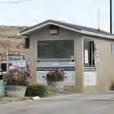
Wilsons Landing Fire Hall Station 42




CENTRAL OKANAGAN WEST ELECTORAL AREA
Traders Cove Waste Transfer Station
Crime Stoppers and Victim Services RCMP Detactment Richter Street
Westside Residential Waste Disposal and Recycling Centre
CITY OF WEST KELOWNA

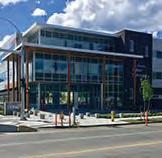
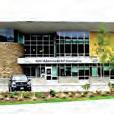

Regional Crime Prevention and West Kelowna Community Policing West Kelowna RCMP Detachment
Westside Regional Wastewater Treatment Plant

DISTRICT OF PEACHLAND

Peachland Community Policing and Citizen Patrol

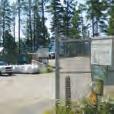
46 RDCO 2019 ANNUAL REVIEW INFRASTRUCTURE MAP
RDCO Office 1450 KLO Rd
Lake Country Community
Policing and Citizens Patrol
RCMP Detachment
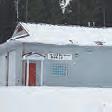
Ellison
LEGEND
Water Purveyor Area
Dietrich (Star Place)
Falcon Ridge
Killiney Beach
Sunset Ranch
Upper Fintry -
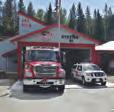
Valley of the Sun/Shalal Road
Westshore Estates

LEGEND
Fire Protection Area
North Westside
Ellison
June Springs
Lakeshore Road

Brent Road
Wilson’s Landing
Joe Rich
Fire Hall Station 61
Joe Rich Fire Hall Station 51
Joe Rich Fire Hall Station 52
CENTRAL OKANAGAN EAST ELECTORAL AREA
CITY OF KELOWNA
47 INFRASTRUCTURE MAP RDCO 2019 ANNUAL REVIEW
DISTRICT OF LAKE COUNTRY

REGIONAL DISTRICT OF CENTRAL OKANAGAN 2019 ANNUAL REVIEW rdco.com































































